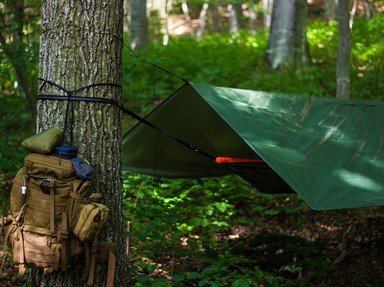Quiz Answer Key and Fun Facts
1. During a hike in the woods, my stomach starts to growl and I begin searching for anything edible along the path. Looking around, I start wondering what the word "edible" means. An intelligent-looking hiker walking toward me tells me that the word "edible" comes from the latin word "edere" meaning "to eat." Is he telling the truth?
2. As I begin my hike in a field full of dandelions, I notice someone devouring the whole plant: leaves, roots and yellow flower. Assuming no harmful substances or pesticides have been used on or near the plant, is this safe?
3. Further along the path, I reach a wetland area and find a cabbage-like plant. After getting a whiff of its foul smell, I determine it to be yellow skunk cabbage. Is it true that the leaves of skunk cabbage can safely be cooked and eaten by people?
4. After turning a corner, I come across another plant with a yellow flower. This time, it's a buttercup. The path is full of them. Are they edible?
5. Further along the path, I see a long stalk with many small pods. Breaking the stem reveals a white, milky substance. I confidently identify the plant as milkweed. If I were to take the plant home and boil the milky substance, would it be safe to ingest?
6. As I continue walking, I reach another field covered with small green leaves and purplish flowers, known as red clover. I see a few hikers eating the plant, saying it's a good source of protein. Is this true?
7. More trees start to come in view and I start to see the leaves of an ostrich fern. I know that the young fronds, or fiddleheads, of this plant, when six inches long or shorter, are edible, but is this true for the older fronds, or leaves, of this plant?
8. After passing the ferns, I reach a plant that I can't identify. There are some berries on the plant and I figure they are either blackberries, raspberries, blueberries, or mulberries. If this is the case, would it be safe for me to eat them?
9. The end of my hike brings me across a pathway of mushrooms. Without a mushroom identification book, I have no idea what species of mushroom it is. Not wanting to take any chances, I pass it by. Is it true that the most reported incidences of mushroom poisoning occur in the United States?
10. Time to head home! As I'm driving along, I see beautiful golden flowers on the side of the road. This plant can only be goldenrod. Assuming no pollutants have harmed the plant in any way, would I safely be able to use the leaves of this plant to make tea?
Source: Author
polly5
This quiz was reviewed by FunTrivia editor
crisw before going online.
Any errors found in FunTrivia content are routinely corrected through our feedback system.


